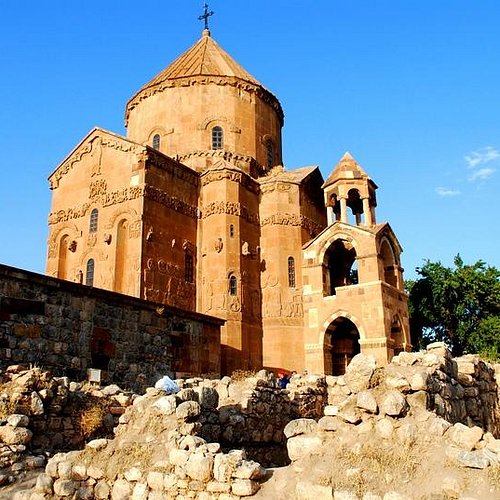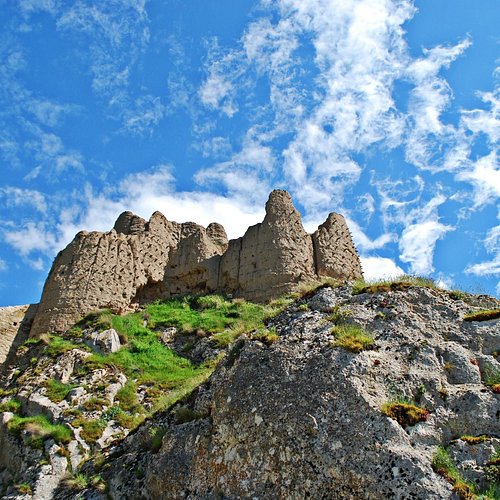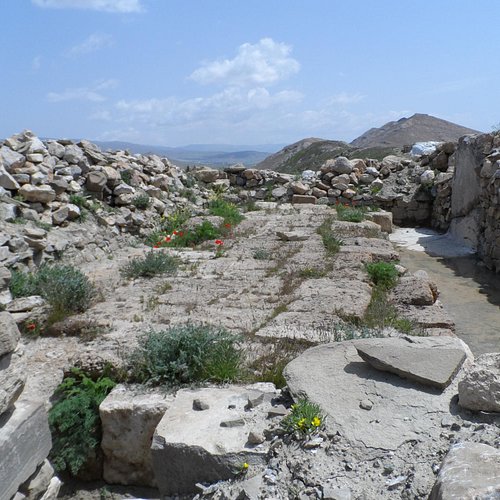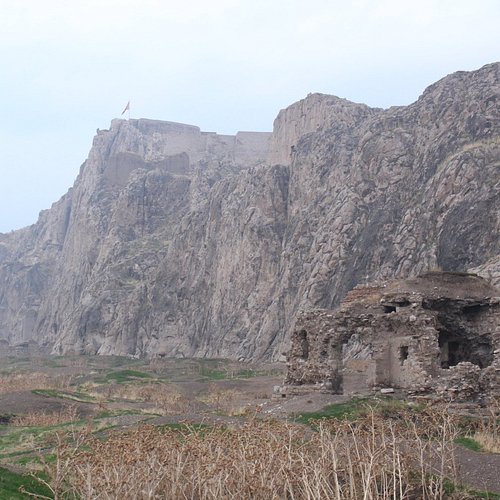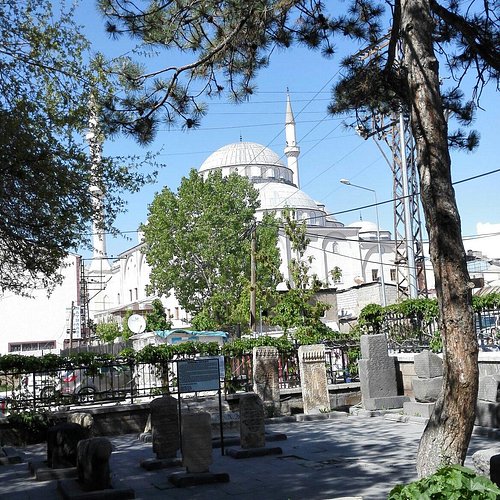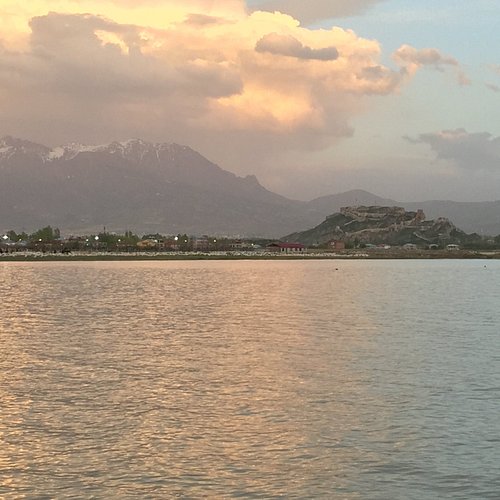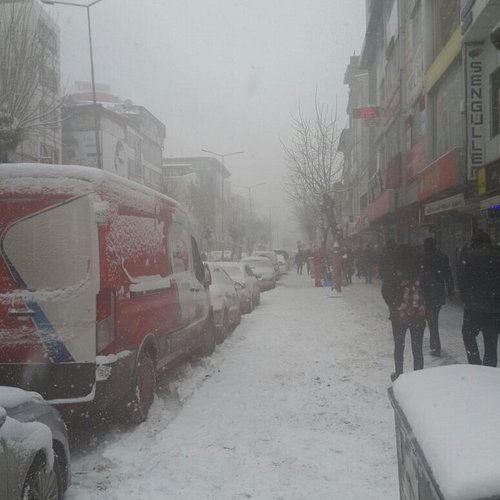10 Sights & Landmarks in Van That You Shouldn't Miss
Discover the best top things to do in Van, Turkey including Holy Cross Church, Van Castle (Van Kalesi), Hosap Castle (Hosap Kalesi), Old Van, Ancient Urartian site of Cavustepe (Sardurihinilli), Rock of Van, Ulu Cami, House of Van Cats, Van Iskelesi, Cumhuriyet Caddesi.
Restaurants in Van
1. Holy Cross Church
Overall Ratings
4.5 based on 188 reviews
Located on the Akdamar Island in Lake Van, this Cathedral is significant because it is the only surviving medieval Armenian church in which most of the wall paintings are still intact.
Reviewed By 1973LYS - Amsterdam, The Netherlands
This small church has extensive history and to have a local guide who knows the history and the meaning of frescoes and reliefs is a must, at least for me. Every detail has its story, every part of the church has its significance. With guide, it will take more than 2 hour to explore the church itself.
2. Van Castle (Van Kalesi)
Overall Ratings
4.5 based on 237 reviews
Reviewed By IftekharA-Sep2016
Granted there isn't anything inside the castle, but this castle covers a HUGEEEE area. Entrance is TL 7 per person and you have to walk quite a bit. You get to see the beautiful Lake Van from the castle and the snow capped mountains surround it. It is truely a very nice view. There is a small house on display how people of Van used to live. The museum is also worth visiting. Emperor Xerxes inscriptions are there on a stone.
3. Hosap Castle (Hosap Kalesi)
Overall Ratings
4.5 based on 75 reviews
Reviewed By apricot44 - Turkey, null
HOSAP CASTLE It is located in Hoşap (Güzelsu) on the Van-Hakkari highway in the Gürpınar district of Van. Hoşap is 60 km from Van and 40 km from Gürpınar district center. The castle, which was built on a steep and steep rock mass in the northwest of Hoşap Water, consists of the inner castle and the outer castle to the north. The castle, which dates back to the Urartu State in terms of its past, has survived to the present day as it was built by Mahmudi Beys subject to the Ottoman Empire. The foundation stones of the Hoşap Castle entrance bastion bear the characteristics of Urartu masonry. The medieval fortress of the 17th century has largely destroyed and closed the Urartian ruins. It is certain that the stone blocks on the wall foundations to the north of the entrance bastion belong to the Urartu period in terms of workmanship. It is understood that the entrance to the medieval castle was completely new, but the steps and corridors carved into the bedrock after the gate are again from the Urartu period. The road first follows the Hoşap Cayı Valley. In this case, Hoşap Castle must be under control of one of the important passages on this road. According to the inscription on the entrance gate of the inner castle, it was built by Mahmudi Süleyman Bey in H. 1052 (1643 AD). The outer fortress walls are surrounded by walls encompassing the east, north and west, shaped according to the structure of the land. The eastern walls are partially destroyed, and the western ones are largely destroyed. Some of the bastions supporting the walls have survived, and the east and west gates are completely destroyed. There is a watchtower to the northeast of the outer castle. It contains the ruins of a mosque and village houses today. The inner fortress was built on a steep mass from the south and sloping from the north. Fortified with fortification walls, bastions and towers from the north, east and west, and a second fortification was built to the northeast. The castle is entered through a door opened to the entrance bastion located near the center on the north side. The inscription, blind window and lion reliefs on the west side of the sign, arranged as a crown door, provide a certain dynamism. In addition, the original iron door wings still function. Inside, there are complex structures called Mahmudi Palace. These are listed on the south side of the castle. There is a viewing pavilion at the top and east, the harem just west of it and the selamlik at the far west end. Masjid, dungeon, oven and cistern are other structures of the inner castle. XIX. The castle, which was abandoned in the middle of the century, has come to the present day largely intact with its buildings. For this reason, it is one of the remarkable symbolic structures of the region. After the Neolithic period, the Hurri-Mittani Kingdom, Urartians, Medes and Persians dominated Hoşap, for a long time under the control of Vaspurakan, one of the satraps of Armenia, with a semi-independent administration. Conquered by the Seljuk prince Melik Shah in 1064 and in 1100 In Hoşap, which came under the rule of Ahlatşah dynasty, later Eyyubians, Anatolian Seljuks, Ilkhanit and XIV. Karakoyunlu reigned since the middle of the century. The castle was ruled by mahmudi beys who migrated from cizre or candlestick since the 16th century. They were administered by the ruler of Karakoyunlu, Kara Yusuf. The period of the mahmuds ended with the Tanzimat decree, and it became a town in the province of van. Suitable for the four-stage construction of the inner castle, the first level consists of a selamlik, a mosque and a dungeon, the second level is a bathhouse, the third level is the harem, and the fourth level is a viewing pavilion and a bey's bath. At the highest point of the inner castle, a viewing pavilion was established at a point dominating the view. The castle consists of 2 parts as an outer and inner castle. There is a mosque in the outer part of the castle. The entrance to the inner castle part is provided from the door inside the bastion in the north direction. Another gate of the inner castle is located in the east part. It is reached by steps carved into the rock. the iron door that provides it has preserved all its glory for centuries. At the top of the castle, there is a viewing pavilion where the whole view can be seen. Harem and selamlık sections are the kitchen, dungeon, masjid, bathhouse, bakery ... the other parts of the castle. While Mahmudi beys were emigrating from jizre or candlestick, they belonged to the Yazidi belief and accepted the shafi and sunni sect from the 16th century on.
4. Old Van
5. Ancient Urartian site of Cavustepe (Sardurihinilli)
Overall Ratings
4.5 based on 57 reviews
Reviewed By BulentDaglar - Ankara, Turkey
We visited Cavustepe last weekend (28th of April). We were so lucky to meet Mehmet Kushan, who is one of the few living persons knows Urartu language. He told us some history and culture of the past civilizations lived here. I recommend buying special handcrafted stones with Urartu nail-writings on it. So, I think this place is a must visit place who came to Van
6. Rock of Van
7. Ulu Cami
8. House of Van Cats
Overall Ratings
4.0 based on 130 reviews
Reviewed By songulk1819 - London, United Kingdom
We are a real cat lover family. We have four tabbies ourself. We loved the visit at van kedisi evi. The cats are so playful and close to human. I just need to say: I was told everything is quite new there so I hope in a few year time or earlier they will do some improvements in the facility. I don’t think cats claw like tiles. The smell of cat litter was also a little strong.

